Cactus "Astrophytum": types and subtleties of cultivation

Astrophytum is a desert cactus native to Mexico. Translated, its name means "plant star". Currently, many varieties of this plant are known, which have earned particular popularity among flower growers.
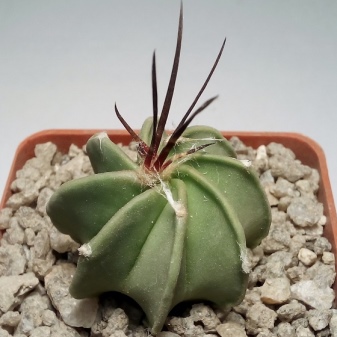
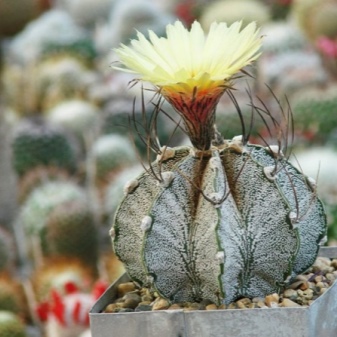
Description
Cactus "Astrophytum" belongs to the low cylindrical, as well as spherical representatives of the cactus family. The flower received this name due to the fact that outwardly resembles a starfish. "Astrophytum" from other individuals of its family is also distinguished by the presence of light specks, which are located on the stem. They are small hairs of hair that are designed to absorb moisture.
"Astrophytum" is a stunted succulent that characterized by the originality of the form, unpretentiousness, as well as the ease of cultivation. The design of the flower has ray ribs, the number of which ranges from 3 to 10 pieces. There are representatives with a spherical shape, in which the ribs protrude slightly. The color of the stem of this plant can be not only green, but also gray.
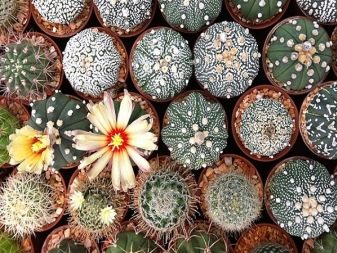
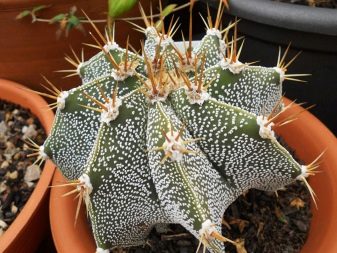
The location of the areoles is concentrated along the apex of the rib. Some species have a cluster of hairs on the areoles, while others have spines. The plants are small in height, they can reach 5-10 cm, and in diameter - 0.2-0.3 meters. The flowering of this variety of cactus occurs in the middle of summer. At the top in the center of the stem is thick peduncle, which is often single.
There are times when "Astrophytum" is able to release several peduncles. 1 bud is formed on one peduncle. The flower has the shape of a funnel and reaches 8 centimeters in diameter. Flowers are separately petal, semi-double, painted in a light yellow or cream color.
The cactus does not bloom for long, it happens no more than 3 days. In place of wilted buds, seed boxes are formed.

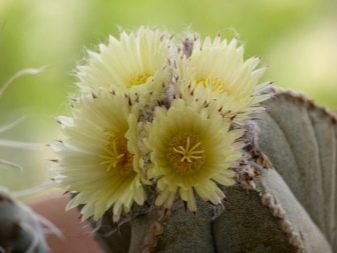
Varieties
The Astrophytum cactus has a small number of species, but breeders are constantly working to expand the options for this indoor flower. To popular representatives of the star succulent include such varieties and cultivars.
- "Astrophytum Capricorn" or "Capricorn". This type of cactus is quite unusual. The young individual has a spherical shape, and the older one is cylindrical. The stems are characterized by the presence of 6-8 divisions and emerald color. Light pubescent dots give the plant a whitish appearance.
Areoles are concentrated on the costal tops, from which later branching brown spines of great length grow. There are situations when areoles envelop the entire cactus, making it look like a cocoon. The flowers of the plant are characterized by a diameter of 6 cm, their petals are yellowish and have an orange center. The flowering phase occurs at the beginning of summer, the buds bloom only during the day.
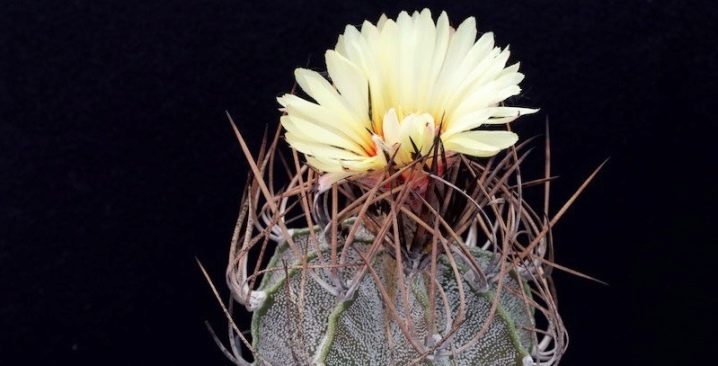
- "Speckled" or "Myriostigma". This cactus is considered the most unpretentious representative of the species, it does not have thorns, and the stem is painted in a rich green color. The plant is covered with many small felt-type specksthat are white. In shape, this type of succulent can be characterized by flattening, roundness.
The ribs are large, their number may be different, but often equal to 5. The flowers of the speckled flower are 6 cm in diameter, yellow in color, sometimes there is a red-orange pharynx.

- Ornatum. This cactus differs from others in its rapidity of growth and large size. In its natural habitat, the flower grows up to 2 meters in height, and cultivated plants - no higher than 0.3 meters. Ornatum has 6-8 ribs.
Areoles are formed with thin long spines, their number in a bunch does not exceed 7. Flowers are light yellow in color, they have a diameter of 7 cm.
The beginning of flowering of this cactus begins at the age of 6-7 years.
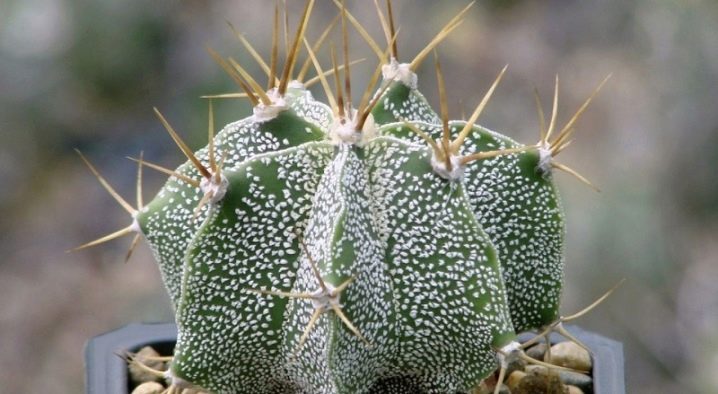
- "Asterias" Is a slow-growing star-shaped cactus that has a spherical shape and a gray-green color, sometimes slightly flattened. In height the plant can reach from 7 to 10 cm, in diameter - 10-14 cm. The ribs of the flower are poorly expressed, usually no more than 8 of them per individual. The spherical plant is completely covered with small specks.
Areoles are located along the tops of the ribs, they do not have spines. The flowers are creamy with a reddish-brown center. Succulent blooms in early or mid-summer.

- "Super Kabuto" is a mix of crossed cactus varieties. It contains "Patterned Astrophytum", which is combined with another species. The flower was bred by Japanese breeders. Plant height is 8 centimeters. The stem of the cactus is characterized by the shape of a ball and the presence of a large number of white specks that overlap the main green color.
The expression of the ribs is weak, their number ranges from 3 to 8 pieces. The flower has large inflorescences, painted in a bright yellow color, with a red core.
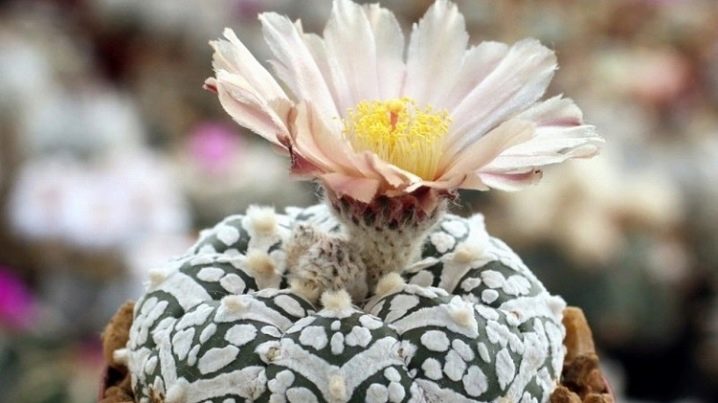
- "Multilateral" cactus is a rather tall plant, with a diameter of 0.2 meters, its height can reach 1 meter. The spherical shape of the plant stem turns into a cylindrical one with age. This variety lacks thorns, instead the trunk is covered with silvery fibers... The number of ribs in a multi-pollen succulent is 3-8 pieces.
The inflorescence is characterized by a large size, yellow color, silky sheen.
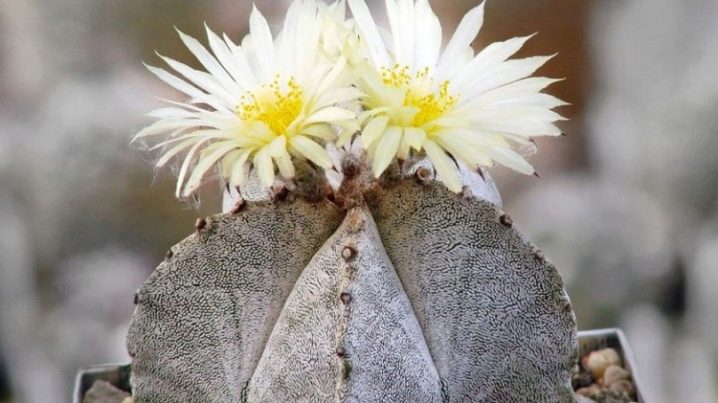
- "Medusa's Head". This flower grows up to 0.19 meters. The stem is a green-colored cylinder decorated with red or coffee-colored bristles. On the stem, there are processes that resemble jellyfish tentacles. The spines of the plant are small and thin.
The inflorescence is light, yellow, of medium size. When the culture fades, egg-shaped seeds begin to form.

Conditions of detention
Cactus "Astrophytum" is light-loving plant, therefore, it should be placed on the south or east window. During the sultry summer, the succulent needs some shade. The Caprikorne variety thrives in partial shade. The flower grows well in conditions with low air humidity, it is demanding for constant ventilation.
Keep the succulent plant warm. In summer, the optimal temperature indicators are 20-25 degrees, and in winter, the plant should be moved to a cool room, where the temperature does not exceed 10 degrees above zero. Also, do not forget that "Astrophytum" needs a temperature difference during the day and night. For this reason, in the warm season, it is better to put the cactus outside, but so that it is protected from precipitation.

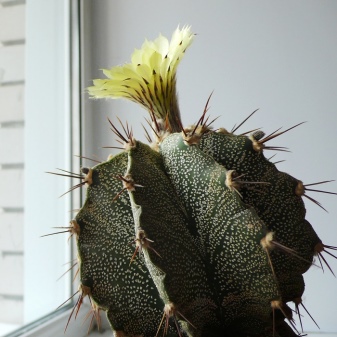
Transfer
This representative of cactus does not require frequent transplants. This procedure should be carried out in a situation where the root system does not fit in the pot. When transplanting, it is worthwhile to ensure that there is no excessive deepening of the root collar, as this can lead to decay. The choice of a flower container should be stopped on an option that is much larger than the previous one. And with each subsequent transplant, its volume should increase.
Expanded clay or crushed brick can be used as drainage. The surface layer can be made from a decorative stone of a small size, it can be multi-colored. Such an event will exclude excessive contact of the plant and liquid. Watering after transplanting is not necessary; it must be done after a few weeks.
You can buy a substrate for planting a cactus in a store or do it yourself. To prepare the soil, it is necessary to mix equal portions of sand, turf, leaf and peat soil. Some growers recommend adding crushed eggshells or crushed bricks to the soil mixture. A slightly acidic or neutral soil is the best option.
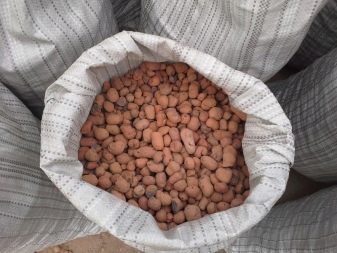

Reproduction
You can propagate "Astrophytum" with the help of seeds, which should be sown in the second decade of February - early spring. The plant has large seeds of brown or black color, their size is about 2-3 mm. The seeding procedure consists of two stages:
- sowing grains;
- care of seedlings.
In order to sow cactus seeds, you will need to prepare a pot or container that is 10 cm long and 3-7 cm high. It is also worth carrying a plastic bag and sowing substrate.
The soil should contain vermiculite, charcoal, leaf humus in a ratio of 1: 1: 2. The earthen mixture should be sterilized.



The pot should be filled with soil and watering. The distance from the soil to the edge of the pot should be at least 15 millimeters. The sowing of the grains should be uniform, the planting material does not need a surface sprinkling with earth. A plastic bag must be put on the container.
High-quality germination of Astrophytum seeds is possible if the following conditions are met:
- 100% humidity;
- diffused lighting;
- daily airing;
- temperature from 20 to 30 degrees above zero.
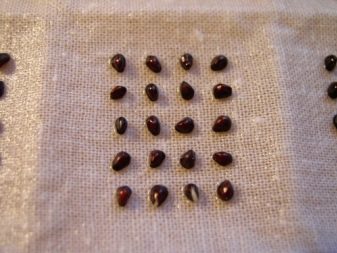

Seeds germinate in 1-4 weeks. The first young plants can germinate by the third day. Compliance with optimal conditions affects the quality of germination... After about 2-3 weeks have passed, you can pick the seeds, while maintaining a small distance between the shoots. A young seedling should not be buried in the ground, at night the cacti should be covered with a film, and during the day it should be removed.
It is necessary to water the seeds with a spray, avoiding drying out. It is also not worth pouring water over the seedlings. The best lighting option is diffused light. The second picking procedure is carried out at a time when the location of plants is observed in close proximity to each other. It is worth adding a special substrate to the container for planting.
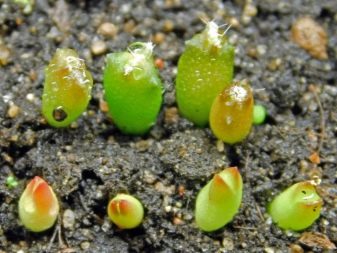
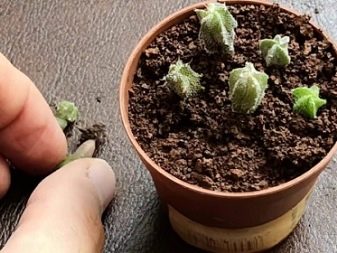
Picking promotes healthy growth of strong plants. In the first 12 months, it is worth doing about 4 such procedures. After a year, their number is halved. When the diameter of the cactus reaches 20 mm, it should be transplanted into a separate container.
Plastic cups with holes in the bottom are considered the best option for this procedure. After transplanting, once every 14 days, it is worth feeding the cacti with fertilizers. When caring for young Astrophytums, you should adhere to the following rules:
- from 8 to 11 o'clock the plant should be in the sun;
- from 11 to 15 o'clock, the plant must be moved to a shaded place;
- when the plants turn yellow, the lighting must be reduced;
- with excessive elongation of cacti, it is worth adding lighting;
- the temperature in winter should be below 15 degrees;
- in the first winter, watering a cactus should be done once a month.
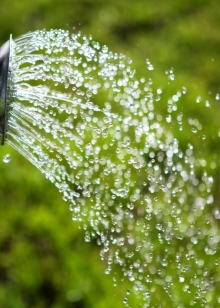
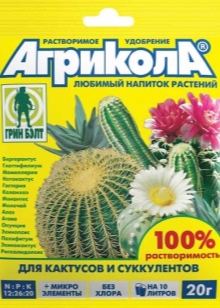
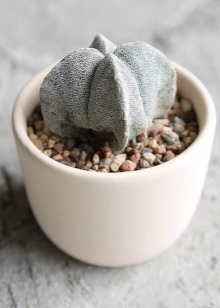
Care
In order to properly care for the Astrophytum cactus at home, there are some rules to follow.
- In the phase of active growth it is necessary to water the plant regularly, but in moderation. The next irrigation should be done after the soil has dried. Water for irrigation should be soft and warm. In autumn, irrigation should be minimal; in winter, the soil should not be watered.
- Fertilize a cactus costs with a special mixture purchased at the store. Top dressing should be carried out in the spring-summer time 1 time in 30 days. In winter, Astrophytum does not need fertilization.
- No pruning is required for this flower, but the florist should not forget about the elimination of faded buds, this will help preserve the decorative properties of the succulent.
- Take care of "Astrophytum" at rest stands in a special way. To do this, you need to gradually reduce the temperature indicator. In winter, as mentioned above, you should not water the cactus, as this can cause rotting of the root system. It is also not worth adding artificial lighting.
If all of the above points are observed, the flower will be able to lay buds and give beautiful large flowers.
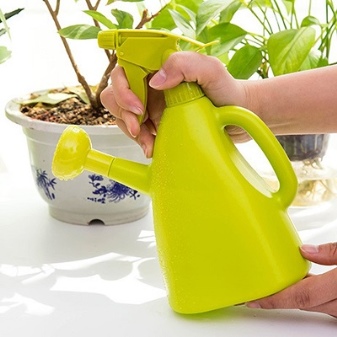

Diseases and pests
The most dangerous pests of cactus include scale, root and mealybug. These parasites contribute to the drying out of the plant. When pests appear, it is worth immediately treating the flower with an insecticide called Actellik. If the cactus grows poorly and looks depressed, this may indicate an attack by a root worm. The only way to eliminate the parasite is to transplant the plant.
A succulent of this type rarely suffers from diseases of a fungal nature. A flower can only get sick when the soil is waterlogged or kept in a room with a low temperature.
Astrophytum is a great option for cactus lovers. He not only does not create hassle when growing, but can also become an original interior decoration.
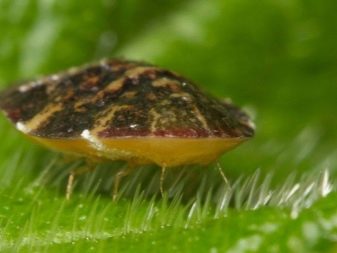

See below for more details.























































The comment was sent successfully.